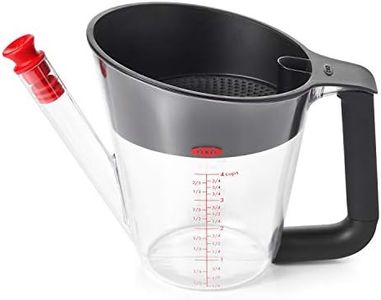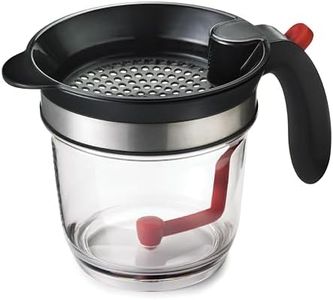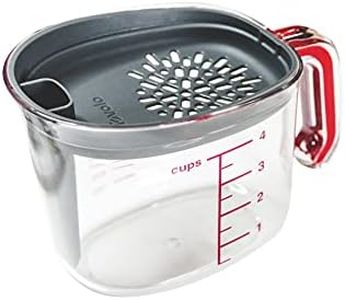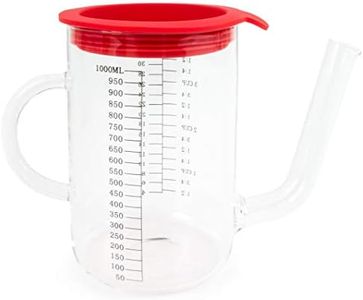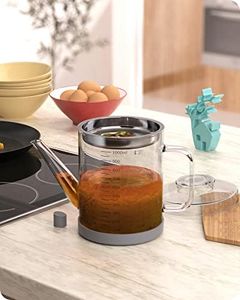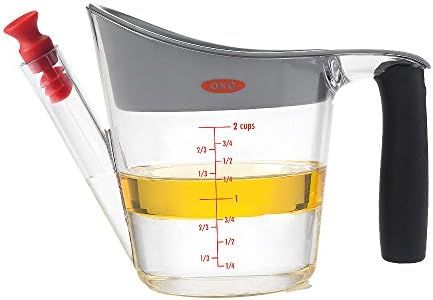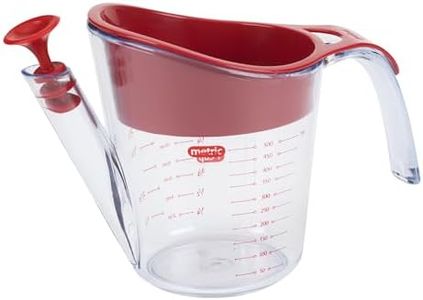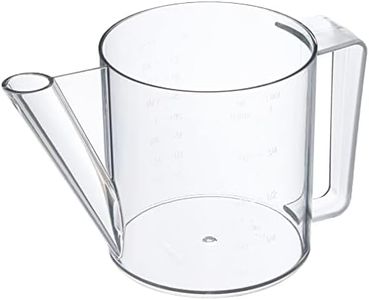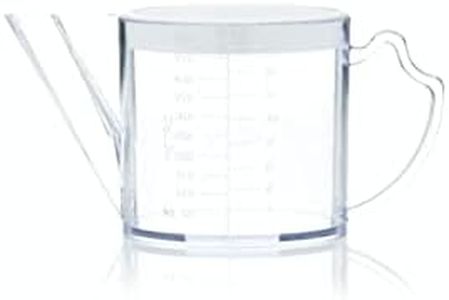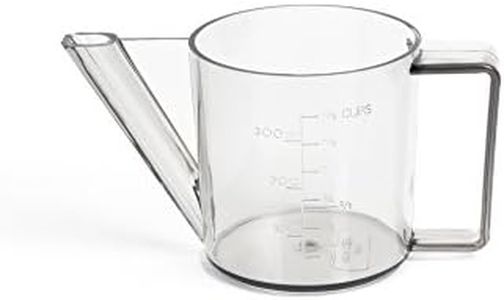We Use CookiesWe use cookies to enhance the security, performance,
functionality and for analytical and promotional activities. By continuing to browse this site you
are agreeing to our privacy policy
10 Best Fat Separators
From leading brands and best sellers available on the web.Buying Guide for the Best Fat Separators
Choosing a fat separator can make preparing homemade broths, gravies, and sauces much easier and healthier by helping you remove fat from liquids. The idea is to pour your cooking liquids into this tool, let the fat float to the top, and then pour or release the lower-fat liquid from the bottom. By paying attention to a few key features, you’ll find one that works smoothly in your kitchen and suits the quantities and types of dishes you regularly prepare.CapacityCapacity refers to how much liquid the separator can hold at once. This is important because it affects whether you'll be able to strain all your broth or sauce in a single go, or if you'll need to work in batches. Fat separators come in smaller sizes (often around 2 cups), mid-range (about 4 cups), and larger sizes (sometimes up to 6 cups or even more). If you usually cook for just yourself or a couple of people, a small to medium size can be enough and is easier to handle and store. Family-sized or frequent batch cooks should look for something larger so they can work more efficiently without stopping to empty and refill.
MaterialFat separators are commonly made from plastic, glass, or sometimes stainless steel. Glass is sturdy, doesn’t retain odors or flavors, and can usually handle hot liquids well, although it's more fragile and heavier. Plastic separators are lighter, often less expensive, and less likely to break, but some types may stain or warp with very hot liquids—choosing BPA-free, heat-resistant plastic is important. Stainless steel is durable and usually suitable for high temperatures, but it can be heavier and doesn't let you see the liquid level as easily. Your choice depends on how careful you are in the kitchen, if you often pour boiling liquids, and whether you want to see your liquids clearly as you work.
Spout DesignThe spout is how you pour the separated liquid, and its design makes a big difference in how efficiently you can separate fat from your liquids. Some separators have a long, low spout that draws from the very bottom, which helps you pour out the lean liquid under the fat. Others use a stop valve or trigger system at the base, letting you release the liquid straight from the bottom rather than pouring, which can be more precise but sometimes harder to clean. If you want something quick and familiar, a spouted type might be better. If you like gadgets or want a bit more accuracy, a trigger model may appeal to you.
Strainer LidMany fat separators come with a strainer or sieve lid that fits on top. This catches herbs, bones, and other solid bits as you pour your hot liquid into the separator. Some strainers are fine-mesh for catching small particles, while others are more basic. If you make stock or gravy that contains lots of bits, or you want to get the smoothest possible liquid, look for a model with a good strainer. If your liquid is already quite clear or you prefer to use your own sieve, then the strainer isn’t as critical.
Ease of CleaningCleaning your fat separator after use is important for hygiene and convenience. Some models come apart easily or have smooth surfaces and simple shapes that are easy to scrub, while others may have hard-to-reach corners or small parts around valves. Dishwashable separators are handy, especially if you use them often. When deciding, think about how much time you want to spend cleaning up, whether you’re comfortable hand-washing parts, and if you tend to lose small pieces.
Heat ResistanceSince fat separators are often used with hot broths straight from the pot, the ability to withstand high temperatures without melting, warping, or cracking is important. Models designed for heat resistance won’t deform or release chemicals when exposed to boiling liquids. Always check if the separator is marked as safe for hot liquids. This is particularly relevant if you’re in the habit of pouring in very hot stock, while those who let liquids cool down before separating might be less concerned.
